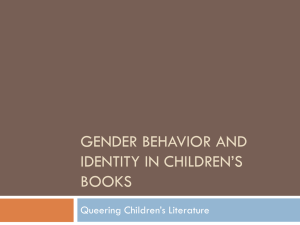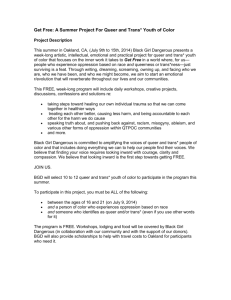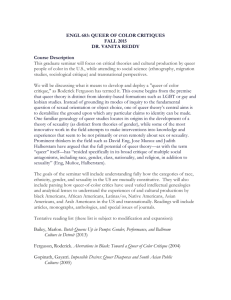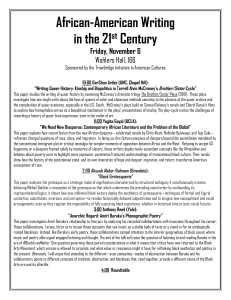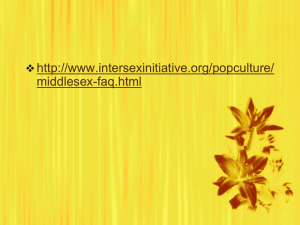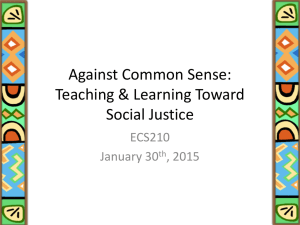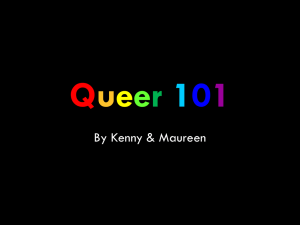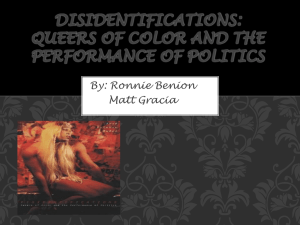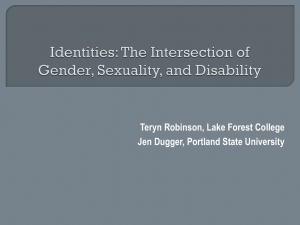Kumashiro Presentation
advertisement
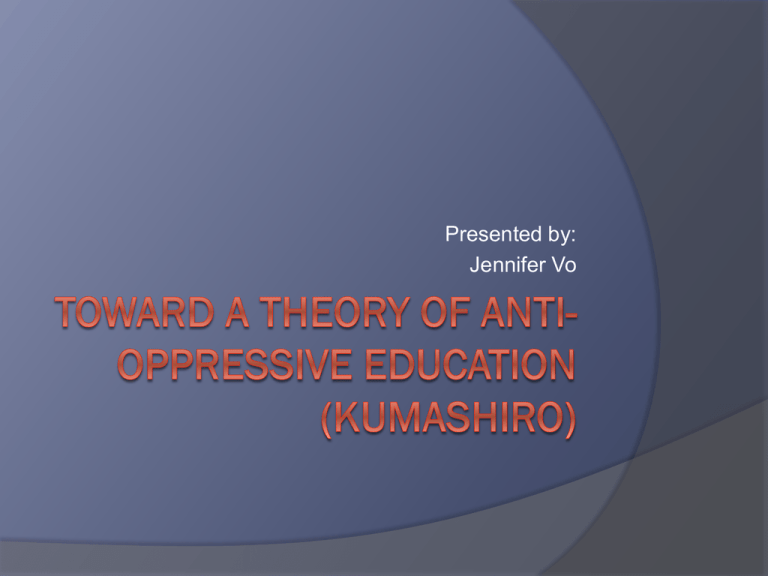
Presented by: Jennifer Vo Definition of the “Other” Other – other than the norm (students of color, female, non-hegemonically male, non-middle class, queer) Also includes students with disabilities, non-English proficient speakers, nonChristian backgrounds “Queer” – Kumashiro uses this b/c of political significance to word, controversially charged term What is Oppression? Actions and inactions marginalize groups Assumptions and expectations for certain groups Sexist ideologies and stereotypes Affects treatment Who the privileged must be to not be the Other Causes “hidden injuries” even when it seems as if students are “succeeding” Outline Four traditonal approaches to antioppressive education 1. Education for the Other 2. Education about the Other 3. Education that is Critical of Privileging and Othering 4. Education that Changes Students and Society 1. Education for the Other Schools need to create helpful spaces such as safe spaces – entire school affirming spaces – students can embrace their Otherness supportive spaces – teachers advocate therapeutic spaces – deal with trauma empowering spaces – students can learn challenge oppression themselves Question: What kinds of safe spaces were in your high school? 1. Education for the Other Embrace as well as acknowledge diversity Teach in “culturally sensitive”ways incorporating home cultures Teach in ways that are equitable for both boys and girls understand differences in how each need to be taught challenge sexism Don’t assume all students are heterosexual and sexually “innocent” Strengths Calls on educators to recognize diversity in student population (the majority of students are marginalized b/c they are not white, male, hegemonically masculine, heterosexual, or wealthy) 1. Education for the Other: Weaknesses Educators cannot focus only on treatment of the Other and ignore other ways oppression plays out Focusing on the neg. exp. of Others implies that the Other is a problem Need more than preventing harmful interpersonal interactions Hard to define Other groups b/c they are fluid and shifting Who is the space for? Homophobia affects more than one group Teaching against racism doesn’t teach against heterosexuality, so silences queer students of color Assumes that educators can accurately assess needs of students Instead of searching for a strategy that works, use a strategy that addresses current known needs but looks for unknown needs Question: When you are accepted for your otherness, do you feel that you can express all of your identities at once? (Queer and Asian, or queer in some sit. and Asian in others?) 2. Education about the Other 2 kinds of knowledge that can lead to harm of the Other Partial knowledge: Other is known through inference and contrast to norm, proper roles (hegemonic stereotypes of marriage) Biased knowledge: leads to misconceptions of the Other (stereotypes and myths of the Other) The knowledges are acquired both outside and inside the school The informal or "hidden" curriculum leads to incomplete/distorted “knowledge” of the Other Should incorporate the Other throughout the curriculum instead of separating into one lesson 2. Education about the Other Strengths Brings visibility to enrich student understanding Normalizes differences, increases empathy Weaknesses Otherness becomes essentialized and remains different from the norm (the “queer experience”, the “Latino experience”) Positions the Other as the expert, reinforces the social, cultural, and even intellectual space/division between the norm and the Other Impractical to try to teach every perspective Question: Have your classmates ever turned to you with the assumption that you can explain a minority perspective just because you belong to that group? 2. Education about the Other Learning to resist one's desire to essentialize, to close off further learnings Goal is not final knowledge but to disrupt knowledge, the desire for more change Look at what has not been said (by the student, by the teacher, by the text, by society) How do those silences make possible and impossible different ways of thinking about Other peoples and experiences? Question: How do you think your school could’ve incorporated questioning knowledge better? 3. Education that is Critical of Privileging and Othering Critique and transformation of hegemonic structures and ideologies Unlearning what is “normal” and learning about Others Students need to consider how they are privileged and how they are complicit in oppression Goal: Take action against oppressive elements of society 3. Education that is Critical of Privileging and Othering Strengths Tries to change society Challenges students to look at themselves Weaknesses Implies that oppression has same effect on people, but not all members have same experiences Awareness doesn’t necessarily lead to action 4. Education that Changes Students and Society Hidden curriculum The ways in which we think are framed by what is not said and what is said Ideas of citation and supplementation Stereotypes invoke a history of oppression, people have to live through the repetitions of these histories “queer”: cite existing meanings for the word, supplement with other meanings/connotations Teachers need overcome fear of unpopularity to address controversial topics like sexism and correct students who perform oppressive acts. Question: What stereotype about your group applies or doesn’t apply to you? 4. Education that Changes Students and Society In schools, resistance to knowledge b/c we unconsciously desire learning only that which affirms what we already know and our own sense of self We are good ppl Fear of confrontation The recognition of the harmfulness of repetition and the imperative to repeat with a difference (cite/supplement) Question: What is a name/term applied to your group that has a negative connotation? And how do you see people trying to change that? Conclusion Problem: the situatedness of oppression makes it hard to find a strategy that works for everyone Kumashiro draws from a body of theories from contemporary feminist and queer readings of psychoanalysis to outline 3 insights and solutions Conclusion: Insights There exists the unconscious desire for repetition and the psychic resistance to change anti-oppressive edu. needs to teach the desire for change This change psychologically affects student, involves crisis Create space for students to work through crises Anti-oppressive education creates new, more diverse, definition of normalcy Need to involve changing the self, rethinking who one is by seeing the Other as an "equal“ Queer our understanding of ourselves

